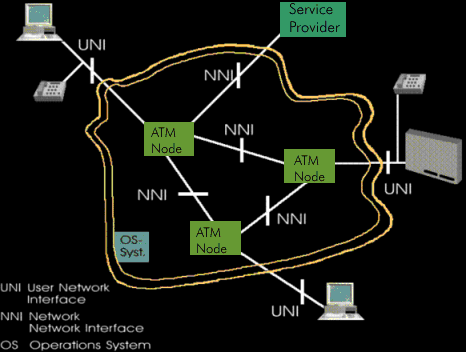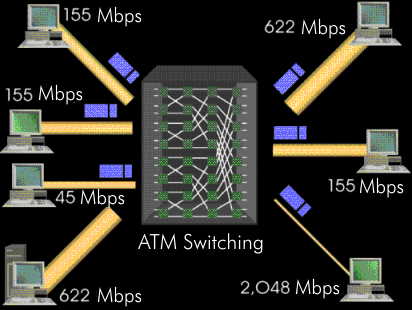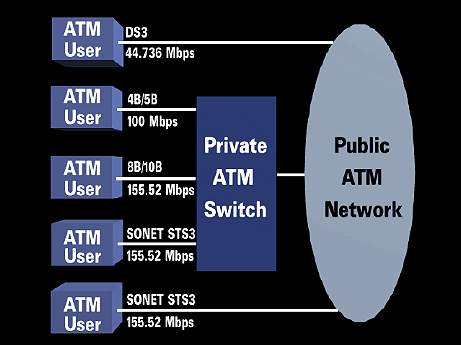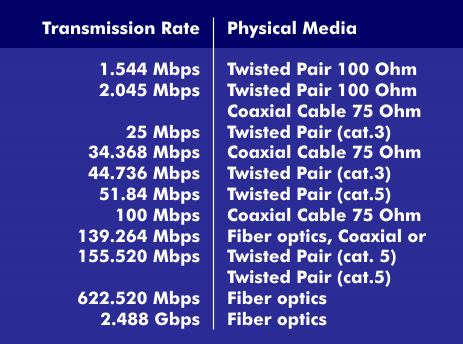asynchronous transfer mode (ATM)
Asynchronous Transfer Mode (ATM) is a switching, connection-oriented basic technology for wide area networks and local area networks( LAN), which can be used to transmit time-critical applications. This technology can be used to transmit voice and data, as well as multimedia, audio, video, interactive television, video conferencing, and much more. With ATM, different transmission speeds, network extensions and services with different service qualities and low calculable delays can be realized. ATM offers these possibilities due to its time transparency and scalability.
The asynchronous transfer mode ATM was first developed as a switching technology for wide area networks(WAN), including B-ISDN, and has extended its scope to local area networks (LAN) since 1991.
ATM uses fixed-length data packets, the ATM cells, to transport data. ATM cells can be processed much more efficiently and quickly than variable-length data packets in switching units. The cell concept enables massively parallel architectures of cell switching units, the ATM switching units, and the realization of networks with data rates in the gigabit range.
ATM technology
ATM is one of the few technologies for high-speed networks that is capable of flexibly transmitting and switching data streams of different bit rates.
Due to its architecture, ATM opens up the possibility of realizing ATM data rates up to the physical limits. In the case of transmission via optical fibers, the enormous transmission bandwidth of about 30 THz (`10^12` Hz) is available. ATM switching units with processing speeds of up to 1 Tbit/s have already been realized in research laboratories.
ATM is a data transmission technology that belongs to the family of cell-switched systems( cell relay). In contrast to packet-switched systems such as X.25, in which data packets of variable length are multiplexed over a line interface, the length of cell relay data packets is fixed.
ATM and cell relay
ATM now represents a particular implementation of Cell-Relay, namely the one chosen for the specification of the B-ISDN standard. ATM is thus a part of the ITU specification for B-ISDN. This can also be seen from the ATM layer model, which was formulated by ITU and contains the exact specifications of the functions and interfaces. Although it is largely based on the OSI reference model, it is by no means as linear in structure as the latter.
As transmission media, the ISO/ IEC standardIS11801 describes strategies for ATM cabling. The transmission medium used is formulated in a sublayer of the physical layer, the physical medium sublayer( PM).
The standardization of ATM is carried out by the ITU- TS Subgroup( SG) XIII and by the ANSI Working GroupT1. In addition to these two bodies, the ATM Forum has set itself the task of accelerating the adoption of ATM through interoperability specifications. Through this work, the ISO with FDDI- PMD or the Internet Engineering Task Force( IETF) with RFCs for the Interim Local Management Interface( ILMI) with ATM addressregistration are involved in the standardization process.




